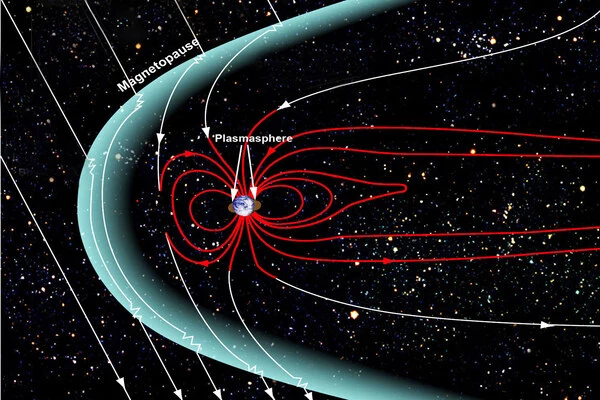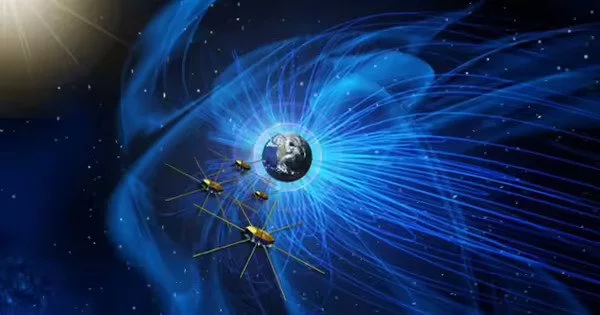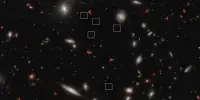Magnetic reconnection is a physical process that occurs in highly conducting plasmas that reorganizes the magnetic topology and converts magnetic energy to kinetic energy, thermal energy, and particle acceleration. Magnetic reconnection occurs on timescales that are intermediate between slow resistive magnetic field diffusion and fast Alfvénic timescales. Researchers recently made a breakthrough in magnetic reconnection, which could eventually help predict space weather.
A postdoctoral researcher in the Department of Physics and Astronomy at West Virginia University has made a breakthrough in the study of magnetic reconnection, which could prevent space storms from wreaking havoc on the Earth’s satellite and power grid systems.
Peiyun Shi’s research is the first of its kind in a laboratory setting, and it is part of the PHASMAproject, a complex experiment involving advanced diagnostics, electromagnets, and lab-created plasma that aims to reveal new details about how the universe works.
Shi probes plasma with a laser-based diagnostic in his experiment. In the diagnostic, laser beams are directed and light scatters off electrons. The scattering of light indicates how fast the electrons are moving. Because the plasma is over 10,000 degrees Fahrenheit, the lasers allow for particle measurements without the use of a probe or thermometer, which would melt at such high temperatures.
Our work demonstrates to the fundamental plasma community that advanced laser diagnostics can measure important kinetic features that conventional diagnostics cannot. This is critical for comprehending various plasma physics processes and supplementing modern satellite observations.
Peiyun Shi
According to Shi, the technique is analogous to the Doppler effect, which is an increase or decrease in the frequency of sound or light waves emanating from a source as an observer moves towards or away from the source. Shi’s findings were published in Physical Review Letters.
Earl Scime, director of the WVU Center for Kinetic Experiment, Theory, and Integrated Computation Physics and Oleg D. Jefimenko professor of physics, described the device as “like a radar gun for particles.” Similar studies, according to Scime, can only determine the average properties of the electrons, but with the technology available as part of the PHASMA project, Shi can measure the actual speeds of the electrons.
“Our work demonstrates to the fundamental plasma community that advanced laser diagnostics can measure important kinetic features that conventional diagnostics cannot,” Shi said. “This is critical for comprehending various plasma physics processes and supplementing modern satellite observations. It’s a great privilege to work on such a promising project with a fantastic team here, and the productive collaboration with Paul Cassak and his graduate M. Hasan Barbhuiya is also critical for this work and much appreciated.”

Understanding vast systems in space requires understanding what’s happening on widely different scales. Giant events can turn out to have tiny drivers – take, for example, what rocked near-Earth space in October 2003. On Oct. 28, 2003, and again on Oct. 29, massive solar flares erupted on the sun, sending X-rays zooming through the solar system. Along with the flares, the sun expelled giant clouds of solar material, called coronal mass ejections, or CMEs. The CMEs slammed into Earth’s magnetic field pushed material and energy in toward Earth. This created what’s called a geomagnetic storm.
This study will have a significant impact on broader issues such as predicting space weather events. Magnetic reconnection is important in how plasma eruptions occur on the sun. These eruptions can cause solar flares, which increase X-ray and ultraviolent emissions, endangering astronauts aboard the International Space Station. Large masses of plasma can also be produced by the eruptions, which can travel through space and collide with the Earth’s magnetosphere. These space storms have the potential to disrupt satellite and power grid systems on Earth.
“As we learn more about magnetic reconnection, we can apply it to everything from space weather to thermonuclear fusion to a basic understanding of how the universe works,” Scime said.
The PHASMA project is housed in the KINETIC Plasma Physics Center. The WVU Center for Kinetic Experiment, Theory, and Integrated Computation Plasma Physics is centered on PHASMA, or the PHAse Space MApping experiment.
PHASMA was designed to make three-dimensional measurements of the motion of ions and electrons in a plasma at very small scales, and it is the only facility in the world capable of doing so. The facility was built with a National Science Foundation grant and continues to be supported by the NSF, the US Department of Energy, and NASA.
















